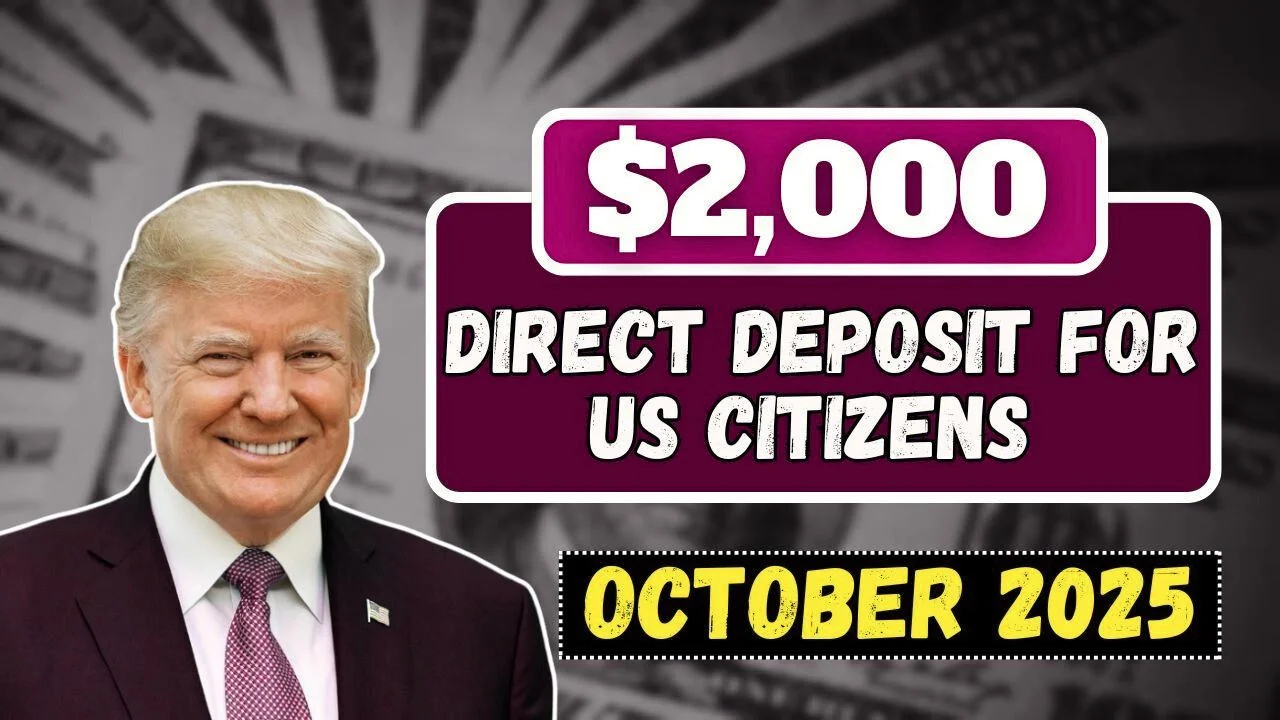$2,000 Direct Deposi:As the cost of living continues to climb across the United States, a new wave of relief could be arriving just in time for many struggling households. The $2,000 direct deposit program—reported to be distributed by the Internal Revenue Service (IRS) in October 2025—has quickly become one of the most discussed topics among Americans eager for financial support. While not an official “stimulus check” in the traditional sense, this initiative aims to provide economic stability for millions of citizens impacted by inflation and rising expenses.
So, what exactly is this $2,000 direct deposit, who qualifies, and when can recipients expect to see the funds in their accounts? Here’s everything you need to know about this highly anticipated payment.
Why the $2,000 Direct Deposit Matters
The U.S. economy has shown signs of resilience in recent months, but many families are still struggling to keep up with increasing costs—especially for essentials like rent, food, and healthcare. The $2,000 payment initiative is designed to help middle- and lower-income Americans handle these financial pressures more comfortably.
Unlike previous stimulus rounds distributed during the pandemic, this direct deposit is being positioned as a targeted economic relief payment, focusing on working-class Americans, seniors, and individuals on fixed incomes. The intention is clear: to give people a financial cushion as inflation continues to outpace wage growth.
Who Is Eligible for the $2,000 Direct Deposit?
According to early reports and IRS guidance, eligibility for the $2,000 direct deposit will be determined by income, tax-filing status, and residency. Here’s a general breakdown of who qualifies:
-
Single filers with an annual income of up to $75,000 are eligible for the full payment.
-
Married couples filing jointly with a combined income of up to $150,000 will also qualify for the full amount.
-
Head-of-household filers earning up to $112,500 will be eligible as well.
-
Those earning above these limits may receive a reduced amount, depending on their income level.
In addition, Social Security recipients, veterans, and SSI/SSDI beneficiaries are expected to automatically qualify, even if they don’t typically file tax returns. Payments for these groups will likely be sent directly to their registered bank accounts or Direct Express cards, similar to previous federal relief programs.
Payment Method and Deposit Schedule
The IRS is expected to use the same infrastructure it used for past stimulus distributions. That means funds will be sent out in waves throughout October 2025, beginning with direct deposits and later followed by mailed paper checks for those without bank accounts.
-
Direct deposit payments: Expected to start hitting bank accounts in the second week of October 2025.
-
Paper checks: May take two to three additional weeks to arrive.
-
Recipients on government benefits: Funds will likely be loaded automatically onto existing accounts or cards.
To ensure you receive your payment without delay, make sure your banking and mailing information is up to date on your most recent tax filing or through the IRS online portal.
Tax and Reporting Rules
The $2,000 direct deposit is considered a federal relief payment, not taxable income. Recipients will not need to report it as earnings on their 2025 tax return. However, if the payment is part of a broader refundable credit or adjustment program, the IRS will provide additional instructions closer to the tax season.
It’s also worth noting that those who didn’t file taxes in 2023 or 2024 might need to submit a simple online form to claim their payment, similar to previous stimulus check procedures.
Avoiding Scams and False Promises
As excitement grows around the $2,000 deposits, scammers are also seizing the opportunity to target unsuspecting Americans. Remember: the IRS will never call, text, or email you to confirm eligibility or collect personal information. Always verify updates through the official IRS.gov website or trusted government channels before taking action.
The Bottom Line
The $2,000 direct deposit program could offer timely financial relief to millions of U.S. citizens facing continued economic strain. While full details are still being finalized, this initiative is a hopeful sign that the government recognizes the need for ongoing support in uncertain times.
For many Americans, these payments won’t just help cover bills—they’ll provide breathing room and a sense of stability heading into the final months of 2025.
If you’re eligible, keep a close eye on your bank account this October—relief may be just a deposit away.

